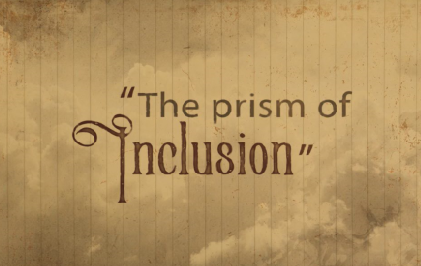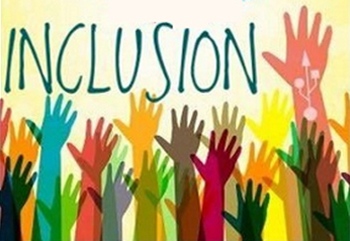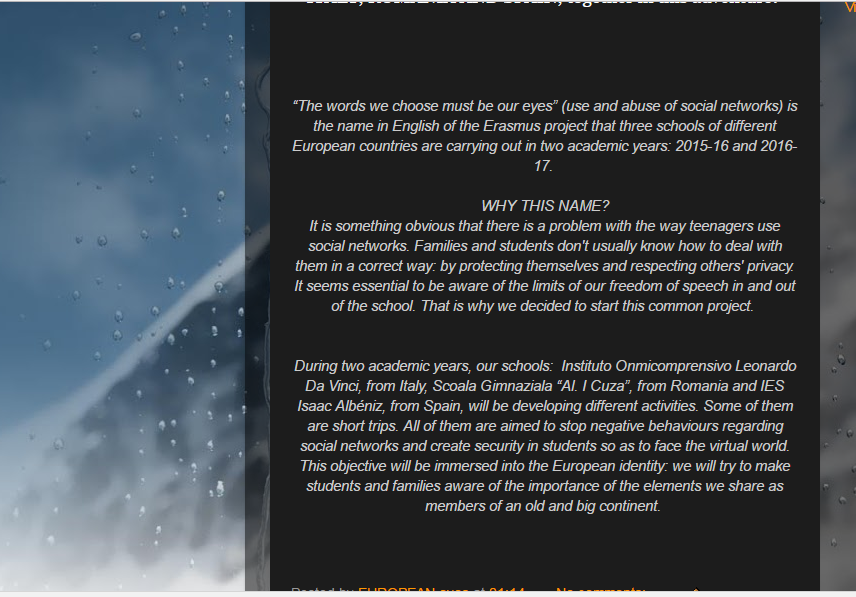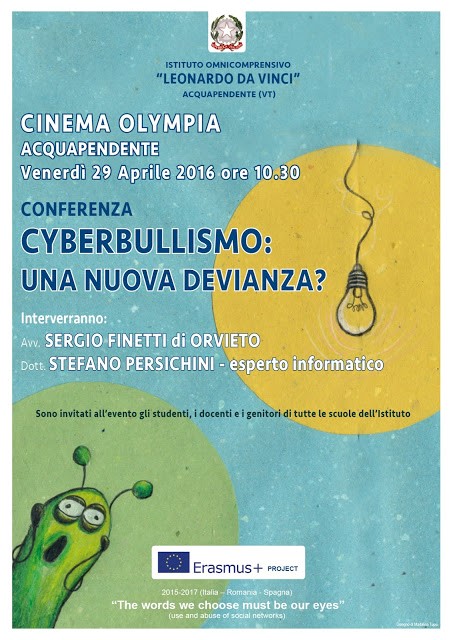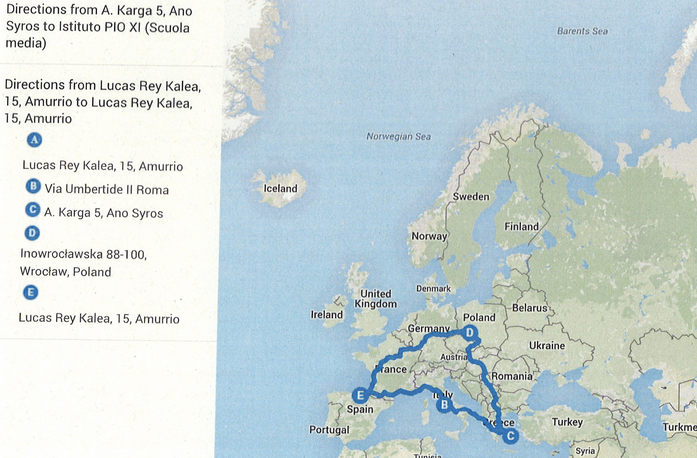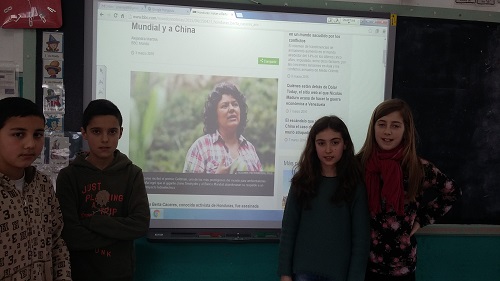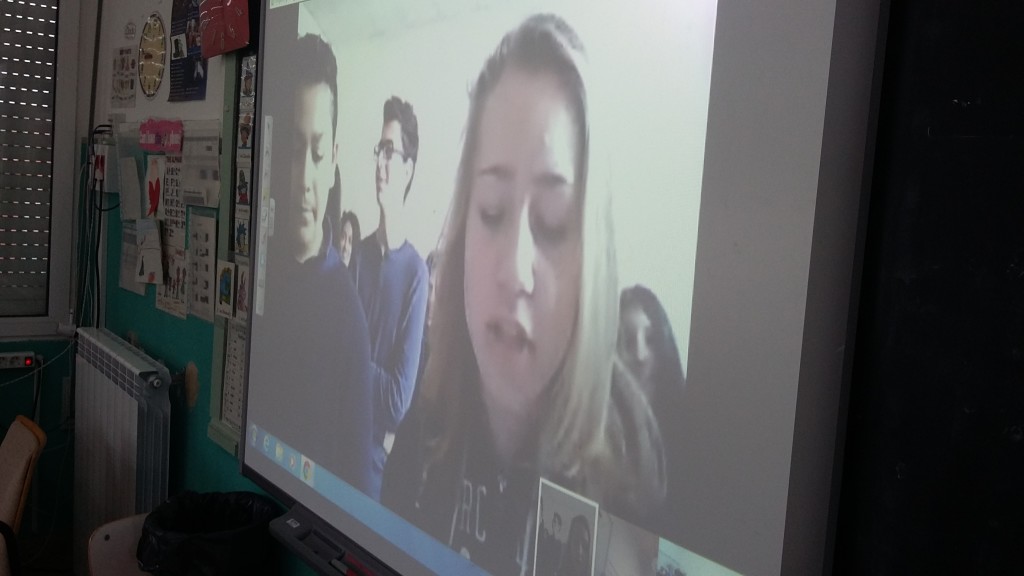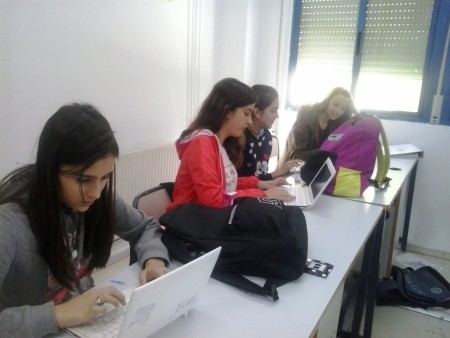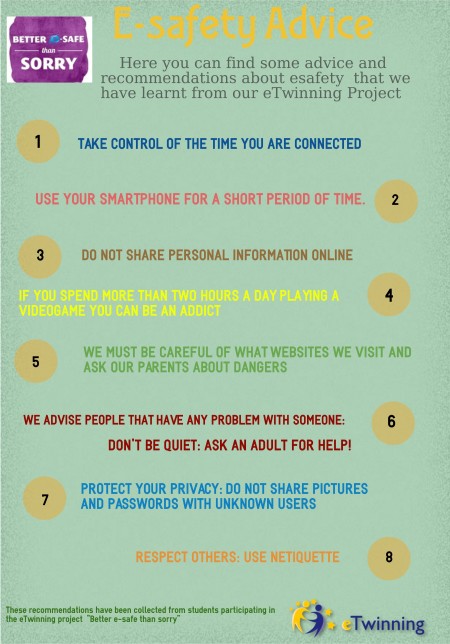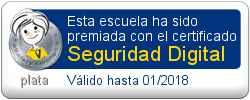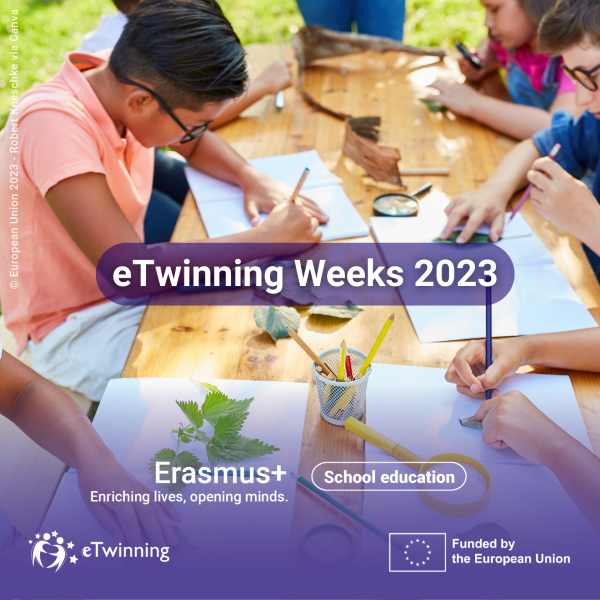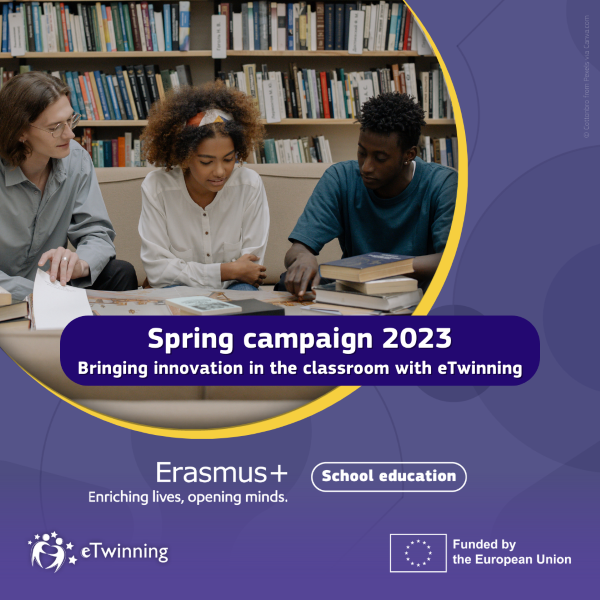Digital Citizenship: Use and Abuse of Social Networks and their Impact on Teenagers, Families and School
School campaignsDigital citizenship (also called cyber-citizenship or e-citizenship) is defined as the norms of behaviour with regard to the use of technology.
Digital Citizenship involves the understanding of human, cultural and social issues related to the use of Information and Communication Technologies (ICT), as well as the application of behaviours relevant to that understanding and the principles that guide it: ethical, legal, safe and responsible use of the Internet, social networks and available technologies.
Títle of the project:
Use and Abuse of Social Networks and its Impact on Teenagers, Families and School
School:
I.E.S. ISAAC ALBÉNIZ secondary school
Teachers:
64 teachers in the school
Autonomous Community:
Madrid
Partner countries:
Italy
Romania
Educational Stage:
Secondary
Areas/Subjects:
The project is coordinated by English teachers, but as it is the subject of the tutorials all departments are involved.
Language:
English
Description:
The project is basically about training families, teachers and students in the correct use of social networks, to teach them to avoid conflicts arising from their misuse.
We know that our pupils use social networks without any help or training, since those responsible for this role, for educating them, don’t have the necessary information either
Both families and teachers educate pupils from an early age in healthy habits of nutrition, citizenship, hygiene… However, we give them a mobile phone or a tablet without giving them any instructions on how to use it. They use it without any supervision, except for parental controls perhaps for websites with violent or inappropriate content. This is where our education in this subject usually ends. This isn’t enough.
The digital world is complex but knowing some basic principles for safe, responsible and healthy use are essential. New generations must have a digital identity. In today’s world it’s as essential as a CV. But the digital reputation that many acquire using networks improperly might hinder them in the future.
This training of the educational community, through various activities in collaboration with our Romanian and Italian partners, is what we’re carrying out in our project.
It should be noted that we’re at the beginning of the second year of our project and at the moment we can only partially see the results of the project.
The focus during the first year was on families and pupils. During the second year it will be mainly on the teaching staff and there will be a refreshment of the points covered in the first year for families and students.
Link to TwinSpace:
https://twinspace.etwinning.net/11201
Other links
http://www.educa2.madrid.org/web/centro.ies.albeniz.leganes/ (school website)
http://eyeswechoose.blogspot.com.es/ (Project Blog)
Aims:
Our overall aim is to learn how to educate in the safe, responsible and healthy use of technology.
Our specific aims are:
- Provide students with useful and legal information so that they know how to use the networks efficiently.
- Help families and teachers to redirect social behaviours and problems directly associated with the misuse of networks.
- Create a fast, reliable means of communication between school and families.
- Learn and share experiences from international partners about similar social and educational problems.
- Work collaboratively with local, national and international institutions to find solutions to our concerns.
- Modify indications at school and plans related to digital uses.
How did the idea come about to carry out this project?
In recent years, relationship/group problems were detected that, whilst reflected at school, had their starting point outside the school. Since the pupils attending the schools usually come from areas near the school, this means that the personal relationships that are established are, most of the time, friendships outside the school as well. That is, conflicts within groups of friends/acquaintances created outside impact on their behaviour at school.
The fact that most of these relationships take place through social networks, regardless of whether the pupils in conflict are physically separated (in different classrooms/groups), led us to consider the misuse of the digital world. Hence our main aim is to EDUCATE in their correct use. We’re concerned with the safe, responsible and healthy use of technology.
Activities
Talks in the classroom (tutorials, presentations) and outside (Educalike) on the safe, responsible and healthy use of technologies, including the Internet and social networks.
Creation of presentations for partners, questionnaires, networking groups for analysis, an institutional Twitter account (@Albenizprojects), logos, debates, research on certain topics (netiquette, cyberbullying)
Discussions on how our pupils and their families actually use the digital world, creation of questionnaires on this use to share with our partners, analysis of results and comparisons, proposals for solutions, discussions on talks about the subject (Police and Educalike), analysis of results after certain activities (e.g. creation of group/class on Whatsapp and Twitter using Netiquette criteria), discussions on real/simulated situations that reflect conflicts generated in the networks, proposals for the creation of a “handbook” on the correct use of networks.
What role has the school and the teaching staff had in the project towards educating students to be part of a responsible citizenship (e.g. teaching them to prevent risks in the publication of personal information, comments …)?
Although teachers played a great role last year in leading tutoring activities related to the subject, this is the year when they’ll be the key element. They’ve participated in talks at the Parents School, but more through personal rather than professional interest. The information they’ll receive this year will be how to include their new knowledge in the classroom, not only as tutors but as teachers who include technology as part of their subject: how to manage INFOXICATION, content healing techniques, health impacts, reading techniques, (work to modify reading in F-shaped patterns, multitasking versus continuous alternation of tasks, management of copyrighted content, Creative Commons).
How does this eTwinning project promote digital citizenship? What spaces and tools on the platform contribute more effectively to training in digital citizenship? Is there any difference in how this issue is dealt with in the countries of your European partners with respect to Spain? What are the differences, similarities?
Digital identity is essential for our pupils in the globalized world in which we live. This is something that all the inhabitants of the planet share. The definition of Digital Citizenship, defined as the norms of behaviour with regard to the use of technology, is considered to be in a process of permanent definition as the technological possibilities develop.
Digital citizenship involves the understanding of human, cultural and social issues related to the use of Information and Communication Technologies (ICT), as well as the application of behaviours relevant to that understanding and the principles that guide it: ethical, legal, safe and responsible use of the Internet, social networks and available technologies
A digital citizen has the right to access Information and Communication Technologies (ICT), and their appropriation, the development of digital skills, safe, transparent and private access to online information, as well as participation through technological means.
All this is the subject of our project. As far as eTwinning is concerned, we believe that being able to share our experiences in the platform and in the Twinspace space makes it an essential means of diffusion and working.
Being the basic problem of our project, a global problem, there are few differences between partners. Teachers, families and pupils share the same disinformation and anxiety about how to help solve bad habits.
The only difference lies in which social networks are most widely used in the different countries.
How have the pupils’ families contributed to their training as active citizens? On a scale of 1 to 10, and in general terms, what “Digital Citizen level” would these families be at? Do they have any training in this area?
Families are very concerned about the subject. They usually believe that their children know more about technology than they do. This is true of the physical use of the tools (what buttons to press etc.) but not with regard to the common sense to be applied in its use. Both groups share a great deal of ignorance about what the digital world really is.
The Parents School created in schools allows us to educate mothers/fathers who are aware that they must also have their digital identity and accompany their children while they acquire it. We believe that we’re still in the process of learning but at this stage of the project and based on the fact that, in general, their level was around 3, they would now be at 6.
These are links to documents shared with families and explained in different talks:
https://drive.google.com/open?id=0BzdwlwMiQvGROGdJN01rVnBHTDA
https://drive.google.com/open?id=0BzdwlwMiQvGRajVoUzB6R0kwenc
https://drive.google.com/open?id=0BzdwlwMiQvGRWVlPNWllajdhdDA
Has the idea that the pupils had, before and after doing the project/activities, changed with regard to online rules of behaviour?
As we mentioned earlier, we are only halfway through our project. During the first year, the information we worked with had more to do with netiquette and privacy in networks than with a more extensive view of the digital world. This school year we’ll work on more specific issues such as rights, health and responsibility.
We consider that the project is indeed modifying behaviours and uses since at this point in the term in previous years relational problems derived from networks were detected and as yet there haven’t been any cases.
What impact has this project/activities (or the theme of the project, or any specific activity) had on the teaching staff? Is there a greater awareness of online behaviour? Do they take more precautions, of what type? Are bad actions corrected? Have any new protocols been established? Has the layout of the furniture in the computer room changed, for example?
At the beginning of the project, the entire school community realized the ignorance we have on the subject. This has been a clarifying starting point: the interest of everyone in learning to educate.
This why the Tutorial Action Plan has been modified and the Parent School created. A handbook will also be produced on the subject to be shared on all the platforms we use, as well as a cyberbullying protocol that will be created.
The physical arrangement of elements cannot be changed due to the space per pupils who use them but we will work on the health problems that may arise from bad postures.
We believe that at the end of the project the answers to the questions raised can be answered positively and in detail, but we’re not there yet.
Ana Mª Sotres Landache (on behalf of 64 teachers participating in the project).
Inclusion, the central theme of the eTwinning programme in 2017
School campaignsThe theme that will guide the activities of the eTwinning programme in 2017 will be inclusion. Thus we will be continuing to pursue a line of actions based on the values of the Paris Declaration which promotes citizenship, freedom, tolerance and non-discrimination..
In the education field we will be addressing the concept of inclusion from a broad perspective, in accordance with the four main priorities for European cooperation mentioned by the Paris Declaration:
- ensuring that children and young people acquire social, civic and intercultural competences, by promoting democratic values and fundamental rights, social inclusion and non-discrimination, as well as active citizenship
- enhancing critical thinking and media literacy, particularly in the use of the Internet and social media, so as to develop resistance to all forms of discrimination and indoctrination
- fostering the education of disadvantaged children and young people, by ensuring that our education and training systems address their needs
- promoting intercultural dialogue through all forms of learning in cooperation with other relevant policies and stakeholders.
During the course of 2017, we will emphasize this topic across our eTwinning activities: from workshops and conferences, to communication campaigns, publications and featured articles on the portal.
If you are still not a member of eTwinning, we encourage you to register and participate in the different planned activities.
Header image source: free image designed by Freepik
Digital citizenship: B&G=COEDUCATION (BOYS AND GIRLS=COEDUCATION)
School campaignsSchool
Lucas Rey-Matias Landaburu.
Teachers
Joserra Jiménez with the involvement of all the teachers at the school.
Autonomous Community
The Basque Country.
Partner countries
Italy, Greece, Spain and Poland.
Educational stage
Primary Education.
Curricular areas
Citizenship, English as a Foreign Language, History.
Language
English.
Recognition
- Quality Label from all member countries of the project.
- Pupils from the Basque Country Primary Education Teaching School spent a day at the Spanish school to gather information about the project to be able to do an end-of-course study on eTwinning and the Coeducation project.
The Italian school took advantage of the national Tablet day (in Italy) to publicize the project via Skype to other Italian schools.
Description
B&G=COEDUCATION (BOYS AND GIRLS=COEDUCATION) is a project that is intended, designed and implemented to raise awareness about the values and principles that must prevail in our society.
To this end, activities have been carried out that on the one hand cover the personal and family environment of the pupils (school, family, media …) and, on the other hand, involve each and every one of the organizations close to the pupils (local and business organizations, NGOs, etc.)
The project was carried out among schools in Spain, Italy, Greece and Poland and although only 6th year primary pupils participated in the twinspace, we must point out that the activities performed have involved all the teaching staff at the school and the families.
The project was carried out throughout the school year, but we think its effects will last over time.
“Citizenship” is the area that has been covered most during the course of the project but we mustn’t forget other areas such as History, English and Technology (use of ICTs)
Link to TwinSpace
https://twinspace.etwinning.net/9840/hom
Aims
The main aim of the project was to implement the Coeducation educational method at schools, a method based on the principle of gender equality and non-discrimination. Coeducation means not establishing sexual power relations, but incorporating the different realities in equal conditions. Through this project we wanted both pupils and teachers, as well as the rest of the educational community (families, environment …), to be aware of the role that men and women have played throughout history.
How did the idea come about to carry out this Project?
The Lucas Rey school is part of a three-year educational project called “Hezkidetza-Coeducation”.
We thought it would be a great idea to use Etwinning as a way of disseminating the different activities and proposals that the school was carrying out. In this way we managed to involve more European schools and so the pupils could critically analyze and compare what was being done on this subject in different European countries.
We should highlight the role of the Italian teacher who had to overcome various obstacles to carry out the project, since her school is religious and some of the activities weren’t well received at first by her school.
Proposed activities aimed at spreading the fundamental values and principles that govern our society (freedom, equality…)
The activities proposed and developed in the different European schools have been aimed at spreading values of equality and non-discrimination.
Some of these activities are mentioned below:
- Family survey: the pupils conducted a survey of their families to learn the role that each of their parents performed at home. the results were subsequently analyzed and compared among the different countries
- Sexist language: male and female pupils from each school visited their respective schools in search of posters and signs of sexist language (teachers’ room, classroom etc. (using the male forms). Anything that could be discriminatory on the basis of sex was replaced by non-Sexist posters made by the same male and female pupils. Later they analyzed and compared them with other countries to see if the native language in each of them was sexist.
- 8 March Celebration: A few weeks prior to 8 March, pupils worked on producing different murals on the role of women in society. On the same day, 8 March, and by using Hangouts, children from different European schools explained their respective work to the other boys and girls.
- Christmas Toys: With the arrival of Christmas, pupils from different schools analyzed various toy catalogues in order to see whether advertising used on the subject is sexist.
- Use of School space: In this activity, participating schools were free to work on the use made of the space with respect to male or female
The Spanish school analyzed the use of the school playground at break time, the Greek and Italian schools analyzed the use of the classroom according to the places occupied by boys and girls.
Traditional Stories: The pupils analyzed various traditional stories by using a template to note the use of female and male roles in these narrations. Later they rewrote these stories, putting into practice and using what they’d learned throughout the project.
Activities proposed/carried out that promote critical thinking, reflection, judgment, especially in the context of the Internet and social networks.
Mass Media: Sexual role.
One of the activities proposed throughout the project and possibly one of the most successful ones consisted in searching through the Internet for different examples of advertising over the years and reflecting on whether or not the use that advertising makes of sexual stereotypes has changed.
The boys and girls also made use of the forum tool within the Etwinning platform, courtesy rules about when it is used being stressed to them (language used, manners, etc.).
We also asked the Ertzantza department to send some professionals to give a talk on the use of the Internet (their talk is planned for the second quarter of this school year)
How has this eTwinning project contributed to achieving the objectives of the Paris Declaration?
The project has tried to create analytical and critical thinking about Coeducation in pupils, teachers and in the educational community in general. To do this, both boys and girls experienced different situations and realities close to their environment so they could get to know their rights and duties.
How does this eTwinning Project promote active citizenship and help prevent and combat racism, intolerance and discrimination in and outside a school context?
Each and every one of the activities carried out throughout the Project has been designed and carried out in order to disseminate Coeducation values to prevent sexual discrimination and to create critical thinking in pupils and their families in discriminatory situations.
Thanks to the project both the pupils and their families have had the opportunity to attend talks about the physical and psychological violence that many women suffer. These conferences have been offered by the “Mundu bat” association.
The school has developed various teaching units aimed at raising awareness among pupils about prevention and reporting discriminatory attitudes.
What impact has the project had on the teaching staff? Have they taken a more active attitude with more involvement in the educational – learning process of pupils to teach them to accept different opinions, beliefs, diversity and gender equality, preventing extremism, inequality, and …?
From the beginning of the project, all the participating teachers were very clear about the involvement of the teaching staff and the school community in its implementation.
As a result of the project, at the Spanish school it was decided that for two days a week the pupils couldn’t use playing materials that we believe are only used by one of the sexes (balls, elastic bands..). In this way we’ve observed that boys and girls spend more time together on those two days and get on better.
On the other hand, all participating schools decided to “be careful” with the language used by their respective teaching staff when sending notes to families.
Other relevant comments on the project related to the subject (synergies with local agencies, immigrant associations, refugee associations, etc
Thanks to the project, the school has participated in various activities carried out by organizations and associations in the area:
Fundación Glog: at the school we asked fathers and mothers to bring in clothes and shoes that they don’t use to donate to the NGO Fundación Glog.
We’re also awaiting a talk that the Ertzantza Internet department is going to give in the school on the subject of Internet safety and Cyberbullying.
Pupils and their families had the opportunity to attend a talk on gender violence that we held in the school library. This conference-talk was held by the “Mundu bat” association.
During the project we’ve used many phrases or sentences related to the subject of Coeducation. One that summarises the essence and the justification for the project is:
“You educate a man; you educate a man. You educate a woman; you educate a generation.”
As teachers, we are aware that education in values should be work in which families and teachers must work together. It’s not a question of convincing but of making people think and reflect on situations that we consider discriminatory and opposed to the values that govern our society. In my humble opinion, I think that with the implementation of the project we’ve contributed to sowing a seed that will eventually bear fruit.
Digital citizenship: Better eSafe than Sorry
School campaignsDigital citizenship (also called cyber-citizenship or e-citizenship) is defined as the norms of behaviour with regard to technology use. Digital citizenship involves the understanding of human, cultural and social issues related to the use of Information and Communication Technologies (ICT), as well as the application of behaviours relevant to that understanding and the principles that guide it: ethics, legality, safety and responsibility in the use of the Internet, social networks and available technologies.
Project title:
Better e-safe than sorry
School:
IES SAN JOSÉ (Villanueva de la Serena, Badajoz)
Teachers:
Francisco Miguel García Barroso (English)
Francisco Manuel Cano Arroyo (Technology)
Autonomous Community:
Extremadura
Partner countries:
- Michael College, Koog aan de Zaan, The Netherlands
- Hristo Smirnenski Primary School, Rakovski, Bulgaria
- Herskind Skole og Børnehus, Galten Denmark
- Longdean School, Hemel Hempstead, UK
- Collège Paul Gauguin, Cordemais, France
Educational Stage:
3rd year Secondary Education
Areas/Subjects:
English, Technology
Language:
English and Spanish
Recognition:
This project has obtained the quality label in the Netherlands, Denmark, France and Spain
Description:
ICTs have become an integral part of our daily lives. We use the Internet for a variety of tasks: communicating with others, shopping online, working, etc. At school we try to keep pace with these new developments but in many cases we don’t have sound, updated training to know how to help our pupils to understand their dangers and implications. Our main question is whether we know how to use the Internet safely and responsibly. The aim/result of our project is mainly to educate our students in responsible use of ICTs, both inside and outside the school, and to make pupils aware of their online safety, giving them the opportunity to find answers through collaborative research in several areas related to safe use of the Internet.
Link to TwinSpace:
https://twinspace.etwinning.net/4386/home
Aims:
- Promote the use of new technologies, especially regarding the digital safety of Internet users.
- Improve the use of foreign languages.
- Increase the abilities of pupils to carry out teamwork.
- Contribute to improving the digital identity of all members of the educational community through protocols and action plans.
- Get to know other cultures, share lifestyles and above all respect the opinions of others.
- Know how to act in case of cyberbullying or manipulation of information on the Internet.
- Implement intervention protocols in problems arising from the use of the Internet and provide schools with a series of documents that regulate use and access to new technologies.
How did the idea of carrying out the project/activities arise?
This project stemmed from one of the needs of our schools detected during tutor meetings that took place during the year 2014-2105. In that year our tutorial action plan was added to several initiatives promoted by the local authority and by the Regional Ministry of Education that aimed to alert teenagers about the use of the Internet and online applications. This awareness campaign was aimed at the entire educational community as both parents and teachers should also be aware of the risks of using the Internet without basic knowledge of cybersafety, not only for their own sake but also to have more resources to assist students in the event of any incidents.
Although the activities were coordinated by the orientation department and the technology department, it was the course tutors this information was addressed to (2nd and 3rd years of Secondary Education) who were responsible for using the tutoring hours with their respective groups to explain the subject of online safety and the risks of mobile devices, especially the uncontrolled use of mobile phones that is so widespread among young people. Experts came to our school to talk to pupils and teach them what to do in cases of cyberbullying or online fraud to reinforce what had already been learned during the tutorials.
Due to the good results, for the year 2015-2016 our tutorial action plan aimed to continue with this work on the digital safety of pupils and another series of activities were thus proposed that not only involved the tutors but as many members of the educational community as possible. As our school is very active in collaborative projects, I suggested starting an eTwinning project on the subject of digital safety, which in addition to meeting the objectives of our tutorial action plan included a more international perspective by involving other European schools interested in working on the same subject.
That’s how, thanks to my contacts in eTwinning, I met some teachers who were looking for more partners to create a project on digital safety. They already had an approved project that contained a good work plan tailored to our needs, with an equitable distribution of tasks that expected realistic and adequate results.
Activities
- Activities proposed/devised are aimed at training pupils to be digital citizens (responsible use of devices and the Internet, Internet norms of behaviour – especially in social networks, respect for users, rights and responsibilities in a virtual environment)
- Activities proposed/devised that encourage critical thinking, reflection, judgment, especially in the context of the Internet and social networks.
We’ve established a plan of activities throughout the year, but in addition to those that belong exclusively to the project, each school has produced others within its local scope that it has then shared in the project with other partners. All the activities are registered in the TwinSpace or in the external links that have included the schools in the platform.
To carry out this project we’ve taken into account project-based learning and cooperation among pupils. The teachers divided the pupils into transnational work groups and then used the forum and their Twinspace messaging service to make contact with each other and learn more about the partners they were going to work with. Then the students had to work together on a research project on one of the aspects of online safety and use of technological devices. We chose the use of mobile phones, cyberbullying and video games. Based on this, pupils had to work collaboratively using the documents in Google Docs to delve further into the subject that they then had to expand on and explain to the rest. To do this they had a series of resources such as the worksheets available at www.webwewant.eu, thanks to which we were able to work on subjects such as the rights and duties of Internet users, netiquette, social networks, privacy and copyright. We also participated in the Safer Internet Day (SID) 2016, thanks to the support provided by the www.chaval.es platform with a series of fun activities with the SmartPrivial app and by setting up classroom blogs in technology classes. In order to know how their European project partners used the network, pupils mainly used the online collaborative questionnaires that we’ve made available to them from the TwinSpace, and which have been the reference documents to subsequently produce the final presentations. We’ve also participated in the “Digital Natives Forum” initiative promoted by the Regional Ministry of Education to raise awareness among teenagers about the responsible use of ICTs and the Internet and thanks to which we have selected tutor pupils at our school who are responsible for transmitting their Digital safety knowledge to other pupils. Our project was included in this activity in which more groups participated, but it was our eTwinning pupils who were appointed “international tutor pupils”, a title that acknowledged their publicising work in both the Digital Natives project and in eTwinning.
Teachers that were part of the project also carried out a second line of work in which we agreed and drew up a “Digital Action Plan” summarizing the most important aspects of cybersafety at our school. In order to prepare this common plan the first thing that we had to do was produce a needs analysis on the subject of the project. We then had a series of resources so that each school could assess, according to their needs, which aspects should be improved or in which ones we could contribute a positive experience for others. Throughout the project we saw what the strengths and weaknesses of esafety policies at our schools were, and this is how we produced this “Digital Action Plan” for everyone, which can be considered as a school working document and allows protocols to be activated in specific cases arising from the use of new technologies. To prepare these documents we used materials and resources that are on the www.esafetylabel.eu. website. This platform awarded us the digital safety silver label certification for our effort and interest in making our school safer and promoting good habits in the use of new technologies.
What role have the school/staff/teacher(s) had in the project towards educating students to be part of a responsible citizenship (e.g. teaching them to prevent risks in the publication of personal information, in comments …)?
As I said earlier, this project is directly related to the Tutorial Action Plan at our school and the “Digital Natives” programme, aimed at the entire educational community. The management team and the orientation department have been very helpful in organizing talks to both pupils and parents given by cybersafety experts (police, ICT consultants…) and in the dissemination and visibility of results obtained. Many teachers have joined the experience of using those resources mentioned above in their tutoring classes and have willingly accepted that there is a protocol in the event of incidents related to digital security. The Department of Technology has increased the presence of resources and indications on the proper use of new technologies on the school website, http://iessanjosevillanueva.blogspot.com.es/p/blog-page.html, and the tutor teachers responsible for promoting basic aspects of digital citizenship now have more resources at their disposal and better training to give their classes on digital citizenship to pupils.
How does this eTwinning project promote digital citizenship? What spaces and tools in the platform contribute more effectively to training in digital citizenship? Is there any difference in how this subject is treated in the countries of your European partners with respect to Spain? What are the differences, similarities?
This project promotes digital citizenship among young Europeans through the use of certain ICT tools and TwinSpace, which is where the whole process of exchanging materials, opinions and ideas takes place. Through collaborative learning both pupils and teachers increase their knowledge of the risks involved in the use of the Internet and create protocols that are valid for a school environment. These protocols are established on two levels: the first involves disseminating the results obtained by the research work, offering a European view of a problem linked to the use of the Internet/new technologies and possible solutions by the pupils; the second level is the digital safety plan developed jointly by the teachers that sets out the guidelines for each school and helps to solve possible incidents such as cyberbullying, theft of personal information online or not respecting the privacy of third parties. This framework not only suggests what to do in such cases but also guides the staff at the school, setting clear guidelines that must be followed to ensure that we all make responsible use of new technologies. These suggestions are contained in two documents that each school can add to its Annual General Plan: Rules for Acceptable Use by Staff and Rules for Acceptable Use by Pupils.
A very interesting part of the project is the comparison with several countries, thus revealing the differences that exist between young Europeans when it comes to using the Internet. Thanks to Google Docs we were able to produce a series of questionnaires whose data we later added to the presentations. We were able to see that almost all young Europeans use their telephone for almost the same purposes and that they spend the same amount of time on the Internet. The social networks to which they have access are mainly Facebook and Twitter although the use of the latter was not widespread among Spanish pupils, who used Whatsapp much more. With respect to the use of mobile phones, it was revealing that many of them slept with their mobiles in their room, something that seemed normal to them, but thanks to successive discussions in class they soon realized that this attitude showed that they never switched off from their phone and they always needed to keep them close. Another example is cyberbullying, a problem that all the pupils in the project already knew something about and they even knew someone who had suffered it. After their participation in the project, pupils learned more about netiquette and how to behave on the Internet so as not to give rise to misunderstandings and difficult situations. They also learned what to do when faced with a cyberbully and what measures can be taken.
The results of the questionnaires and presentations are available in our TwinSpace. The competency that has also been present throughout the project is digital. Within the DIGCOMP framework we’ve worked on the following aspects of area 4 relating to safety:
4.1 Protection of devices: pupils already know about basic protection of their electronic devices and those of others.
4.2 Protection of personal information and digital identity: pupils are aware of the dangers of using the Internet. They show respect for the privacy of others and are able to implement a protocol in case of cyberbullying.
4.3 Health protection. Pupils learn how to avoid health risks arising from the use of digital technology that threaten their physical and mental integrity.
How have the families of pupils contributed to their training as active citizens? On a scale of 1 to 10, and in general terms, what “digital Citizen level” would these families have? Do they have any training in this area?
Families have also been very involved in this project. To begin with, I had to get in touch with them to explain what an eTwinning project was and what we were going to do in class. Given the theme of the project, I asked the families to collaborate, mainly to use audiovisual material in which their children appeared and to allow them to use the Internet to do searches about the project. I also asked them to collaborate to help their children from home, going online with them and providing their opinions as parents on the subjects they had to research.
An example of the good collaboration and involvement of families is the talk given by the teacher Francisco Manuel Cano Arroyo on the dependence on the mobile phone and its consequences. This interesting intervention was promoted by the Parents Association at our school, which from the outset wanted to join the project and participate in the dissemination of activities. In talks like this one and through a series of interviews it became clear that the level of knowledge of families about new technologies and their dangers is very diverse. Almost all parents knew about cyberbullying and were aware of how their children used mobile phones and social networks, but very few knew how to manage a firewall or set security passwords. So this type of training in families is as necessary as it is among the pupils and it’s something that has been evident thanks to projects like this and the interest of families in participating. On the proposed scale families would be between 5 and 6, since many of them limit themselves for example to establishing hours of use of the mobile, video game consoles or the Internet but very few know how to control the contents that their children have access to.
Has the idea that the pupils had, before and after doing the project/activities, changed regarding the rules of behaviour on the Internet?
- COMMUNICATION (mobiles, grammar, texts, abbreviations, idioms,…
- RESPONSIBILITY (downloads, copyright, music, copies, images …)
- RIGHTS (about their own publications …)
- ERGONOMICS (physical damage, strained vision, poor posture ….)
Participating in an eTwinning project can become a very productive classroom experience, with many benefits for pupils and teachers. In our case, we must emphasize the high degree of involvement of the pupils in carrying out the project tasks and in demonstrating the skills acquired from the research work to their classmates. Pupils not only know more about cybersafety and the use of mobile phones, for example, but they also realize that group work and the exchange of ideas or experiences are very important when it comes to seeing the reality that surrounds us from a broader perspective. Now they know how their Europeans colleagues use their mobile devices and that they have the capacity to intervene in conflicts and know how they can be solved. They have become “tutor pupils” whose mission is to help others use ICTs responsibly, report abuse and know how to react in time to a potential problem. It’s the job of the teachers who’ve participated in this project to make ‘Better Internet than Sorry’ a sustainable project that inspires more staff and actively involves them in making our school a safer place for everyone.
What impact has the project/activities (or the theme of the project, or any specific activity) had on the staff? Is there greater awareness of Internet behaviour? Do they take more precautions, of what type? Are bad actions corrected? Have new protocols been established? Has the layout of furniture in the computer room changed, for example?
The impact of the project can also be measured in the teaching staff, although this will be the year when we can really assess whether all the material we have produced is useful. As we already said, one of our achievements as a transnational team is the publication of Rules for Acceptable Use by staff, a set of rules that each teacher has to agree to follow to achieve an acceptable use of ICTs and thus ensure a safe working and educational environment. The Digital Safety Plan that each school has developed according to its circumstances and characteristics will be integrated into the working documentation for the school and will help both the integration of ICTs in the annual general plan and in the tutorial action plan.
Upon receiving the silver safety certification from www.eusafetylabel.eu our school must agree to maintain certain standards in keeping with the category that this platform has given us and we’ve set ourselves the objective for this year of continuing with our work in terms of cybersafety and digital citizenship in order to achieve the next category and thus gain some recognition for our efforts and work.
Francisco Miguel García
IES SAN JOSÉ (Villanueva de la Serena, Badajoz)


